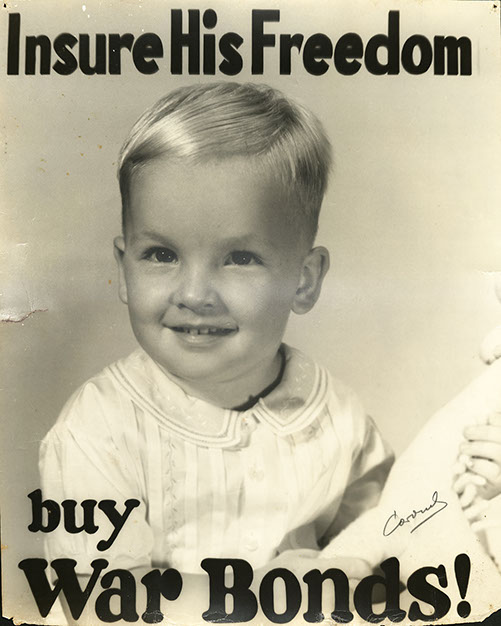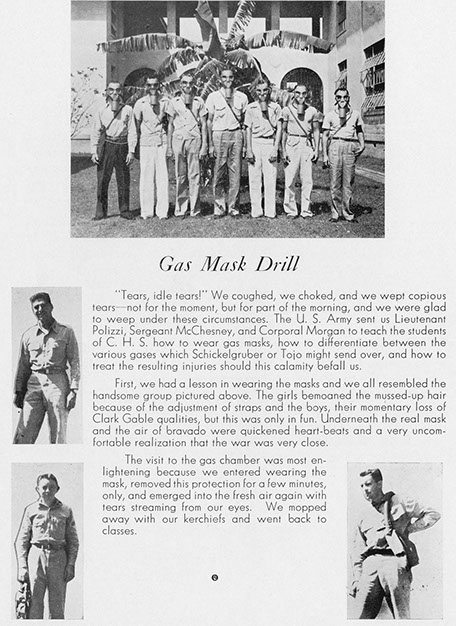Click to View Slide show
War Bonds
War saturated all aspects of civilian life. From rationing to leisure, the threat was at the forefront. Civilians were expected to be patriotic and to actively support the war effort. The U.S. government encouraged citizens to give 10% of their paychecks to purchase War Bonds, including bonds specifically funding construction of battle ships.
Bated Breath
“From the beginning, the Canal Zone was designated a ‘war zone’ . . . we were always surrounded by a strong military presence and wartime defenses . . . ‘blackouts’ were mandatory. Automobile headlights were almost completely covered except for little slits to keep the brightness down, windows in houses were covered as well. If I remember correctly, even the streetlights were painted to cut down on light . . .
“We had several false alarms of enemy attacks and we all went to concrete bomb shelters made by the U.S. Government. There were also many smudge pots set up by the military. When these were set off, a dense cloud of white smoke would appear to cover the town site and the locks. The smoke was made from various chemicals. It is hard to explain the smell but it wasn’t pleasant and one I will always remember.” – Thomas C. Peterson
This online exhibition is based on the exhibition of the same name that was presented at the University of Florida George A. Smathers Libraries, March 7, 2020 - February 26, 2021.
Curated by Elizabeth A. Bouton with assistance from Elizabeth Bemis | Online design by Elizabeth A. Bouton
Student assistant curators: Summer Bias, Coral Dixon, Sean O’Dwyer, and Anna L. Weissman | Title design and other materials by Olivia Bowman
This exhibit was developed spring 2019 as part of the graduate Exhibitions Seminar in Museum Studies taught by Lourdes Santamaría-Wheeler. It was driven by student inquiry and has been an experiment in collaborative exhibition development processes.
Unless otherwise noted, all items are from the Panama Canal Museum Collection, Special & Area Studies Collections, George A. Smathers Libraries, University of Florida.














